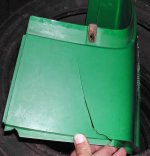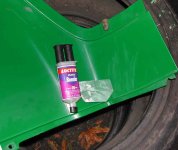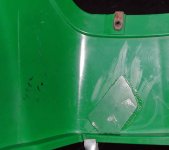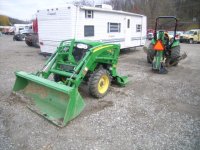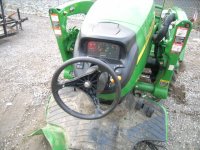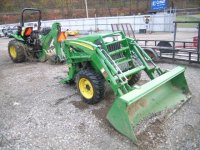RoyJackson
Rest in Peace
- Joined
- Nov 17, 2001
- Messages
- 24,890
- Location
- Bethel, Vermont
- Tractor
- John Deere 4052R Cab,, Deere 855D UTV, Z920A Zero Turn Mower and assorted implements
This is just the 420 FEL....I hope your 430 uses bigger cylinder rods, Roy.
What I'd noticed (in the video) was the pivoting links attached to the rod end of the bucket dump/curl cylinders weren't there. The 430 loaders have them and loaders on larger loader have these links. On smaller loaders, the dump/curl cylinders attach directly to the bucket.
I suppose they provide a degree of mechanical advantage for heavier lifting.
I never measured the rod diameters but I would guess they're a larger cylinder. I do know it's a robust loader (had to tow my 650 lb cutter out of the shed...I use the bucket hooks and chains. I always just towed it with the 790/419 loader. With the 4400/430 loader, I was halfway down to the drive before I realized the cutter was completely off the ground. Didn't even notice any front end squat or wobbling.)
Anyway, I had thought your 4300 had the (optional) 430 loader. I was a bit surprised it had the 420.
